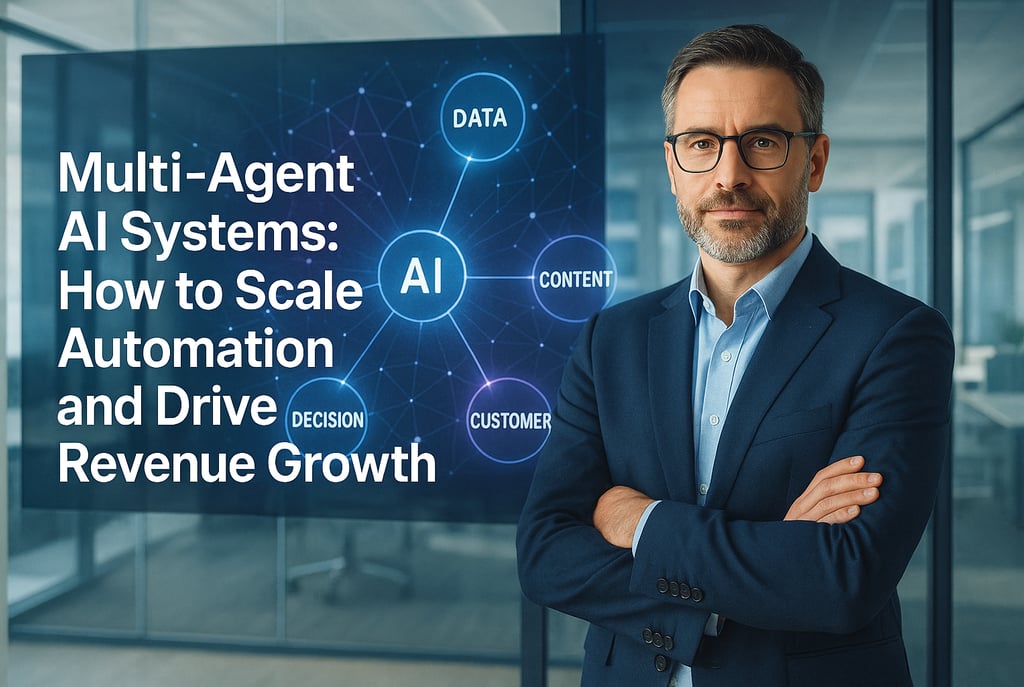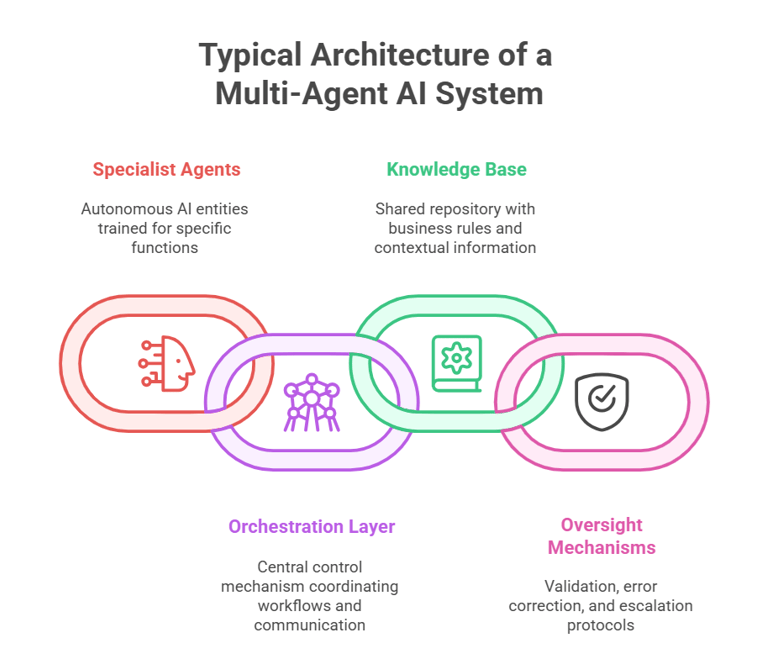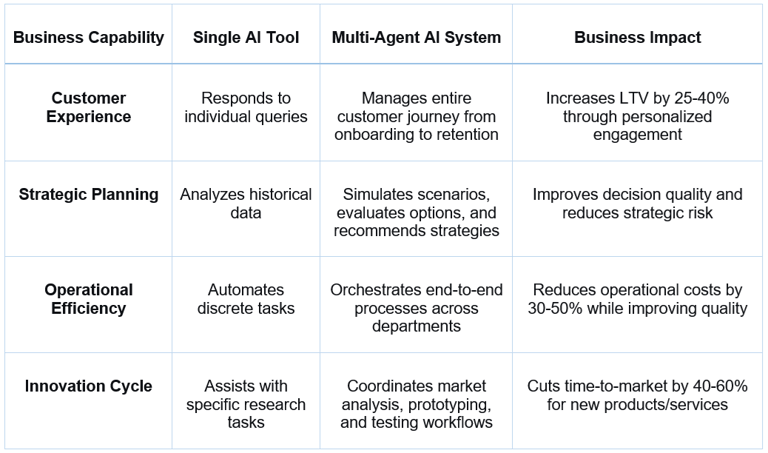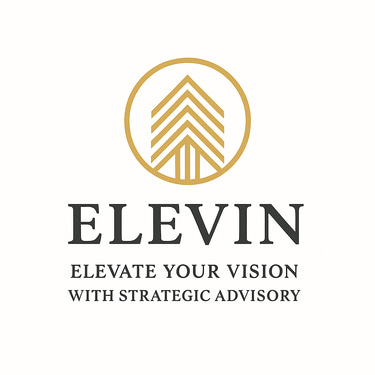Multi-Agent AI Systems: How to Scale Automation and Drive Revenue Growth
Strategic insights for leaders: Discover how multi-agent AI drives 40-80% cost reductions and accelerates sustainable business growth.
Aishwarya
9/28/20258 min read


As a business decision-maker, you've likely invested in AI solutions expecting transformative efficiency gains and revenue growth. Perhaps you've implemented chatbots for customer service, tools for content generation, or analytics platforms for business intelligence. While these single-point solutions deliver incremental improvements, many organizations hit a frustrating plateau—what industry experts call "pilot purgatory."
The stark reality is that 95% of generative AI pilot programs fail to achieve rapid revenue acceleration, with the vast majority stalling and delivering little to no measurable impact on P&L, according to recent MIT research. The problem isn't the technology itself, but rather its implementation architecture. Single AI tools function like brilliant specialists—exceptional at specific tasks but incapable of managing end-to-end business processes that require collaboration, judgment, and sequential decision-making.
The breakthrough comes when you stop thinking about AI as individual tools and start architecting it as an integrated workforce. Multi-agent AI systems represent this fundamental shift—from task automation to process transformation. These systems deploy teams of specialised AI agents that collaborate, make decisions, and execute complex workflows autonomously.
For forward-thinking leaders, this isn't merely a technical upgrade; it's a strategic capability that creates sustainable competitive advantage through unprecedented scalability and intelligence.
But what exactly makes multi-agent AI systems different from traditional automation? More importantly, how can you implement them to drive measurable revenue growth while 95% of your competitors are still trapped in pilot purgatory? Let’s explore in this blog.
What Are Multi-Agent AI Systems?
Think of multi-agent AI systems as a coordinated team of digital workers, each with specialised skills, collaborating toward common business goals. Unlike single AI tools that handle one task at a time, these systems orchestrate multiple agents that communicate, collaborate, and make decisions autonomously.
For example, in customer service, one agent handles initial inquiries, another tackles technical troubleshooting, a third manages escalations, and a fourth analyzes patterns to improve service quality, all working seamlessly together.
In essence, a multi-agent system acts as a digital workforce:
Each AI agent is trained for a specific task, like lead scoring or financial risk checks.
Agents share context and collaborate, mirroring real team workflows.
A central orchestrator aligns tasks with business objectives.
The market recognizes this potential. The global AI agents market size was valued at USD 5.4 billion in 2024 and is expected to reach USD 236.03 billion by 2034, growing at a CAGR of 45.8%. Even more telling, multi-agent systems are expected to record the highest CAGR from 2025 to 2034, indicating where smart businesses are placing their bets.
The Architecture of a Multi-Agent AI System
A robust multi-agent AI system is designed to operate like a well-coordinated digital workforce. Its architecture typically includes the following core components:
Specialist Agents – Autonomous AI entities, each trained for a specific function such as data analysis, content generation, decision-making, or customer interaction. These agents work in parallel to tackle complex tasks efficiently.
Orchestration Layer – The central control mechanism that coordinates workflows, manages communication between agents, and ensures that tasks are aligned with business objectives.
Knowledge Base – A shared repository containing business rules, historical data, and contextual information, enabling agents to make informed, consistent decisions.
Oversight Mechanisms – Built-in validation, error correction, and escalation protocols to maintain accuracy, reliability, and compliance across the system.
Tip: A well-architected system ensures that agents collaborate seamlessly, reduce manual intervention, and continuously optimize performance over time.


Why Your Business Needs Multi-Agent AI Now
The Hidden Costs of Fragmented Operations
Most businesses approach automation in a fragmented manner, addressing departmental pain points with discrete solutions. While this provides initial benefits, it creates significant limitations as organizations scale:
The Intelligence Silos Problem
Single AI tools operate in isolation, unable to share insights or coordinate actions. Your customer service chatbot doesn't learn from your sales AI, and your marketing automation platform doesn't optimize based on real-time supply chain data. This fragmentation creates missed opportunities for cross-functional optimization.The Context Collapse Challenge
Individual AI tools lack the broader business context needed for sophisticated decision-making. A content generation AI can draft a marketing email, but it doesn't understand whether that email aligns with current inventory levels, promotional strategies, or customer sentiment trends.The Scalability Ceiling
As business volume increases, single AI solutions require manual scaling, configuration, and oversight. What works for handling 100 customer inquiries daily breaks down at 1,000 inquiries, creating new operational bottlenecks rather than eliminating them.The Innovation Barrier
Isolated AI tools cannot easily combine to create new capabilities. True innovation emerges when different types of expertise interact—when market analysis informs product development, which in turn shapes customer engagement strategies.
The following comparison illustrates why multi-agent systems represent such a significant architectural advancement:


Why Multi-Agent AI Systems Create Competitive Advantage Today
By 2025, multi-agent AI will be a defining force in business. Early adopters are already gaining up to 40% more productivity and 20–30% higher revenue through AI-driven automation and smarter decisions. The businesses implementing multi-agent systems today will have significant advantages over those who wait.
Beyond revenue gains, multi-agent AI systems cut the need for human oversight. A 2024 study of 128 enterprises found that these systems reduced validation and correction time by 61.2%, saving nearly $1.94M in annual labor costs per company. This demonstrates how coordinated AI systems directly impact business metrics.
Growth-minded leaders are realising that the real gains come when AI handles workflows end-to-end.
Three forces are driving adoption now:
Data Sprawl: Companies run on dozens of apps—Slack, Salesforce, HubSpot, Jira—that don’t always connect. Agents close the gaps.
Decision Speed: Gartner notes that 65% of decisions made today are more complex than two years ago. Multi-agent systems compress time-to-decision.
Cost Pressure: Leaders are expected to scale without adding headcount. Multi-agent AI is essentially “operational leverage on autopilot.”
Want Clarity on Agentic AI? Discover how it can simplify decisions and drive results. Trusted by 100+ leaders and saving them 30+ hours/month, grab your free Agentic AI Book today. Click Here.
How Multi-Agent AI Systems Drive Revenue Growth
1. Operational Efficiency That Scales
Multi-agent systems don't just automate individual tasks; they orchestrate entire workflows. This creates compound efficiency gains that traditional automation cannot match. In fact, these systems can execute tasks up to 33% faster than traditional single-agent or sequential systems.
2. Enhanced Customer Experience and Retention
Coordinated AI agents provide consistent, personalized experiences across all touchpoints. When customers receive faster, more accurate service, they're more likely to purchase, upgrade, and recommend your business.
3. Data-Driven Decision Making at Scale
Multi-agent systems continuously collect, analyze, and act on data from multiple sources simultaneously. This enables real-time insights and automated responses to market conditions that human teams cannot match in speed or consistency.
4. Resource Optimization
By handling routine tasks and complex workflows autonomously, multi-agent systems free your human talent to focus on strategic initiatives, innovation, and relationship building—activities that directly drive revenue growth.
The ROI Reality of Multi-Agent AI: What to Expect
While many AI initiatives struggle to deliver, multi-agent AI implementations consistently drive strong results. In fact, organizations deploying multi-agent AI systems have reported up to a 30% reduction in development overhead and 50–75% faster task completion times, with leading analysts projecting operational cost reductions of 30% as multi-agent workflows scale across business units.
On average, companies realize value in just 14 months, with many noticing benefits as early as the first quarter. The most successful implementations deliver:
40–80% reduction in processing times
20–76% improvement in operational efficiency
15–38% revenue growth driven by better customer experiences
Significant drops in human error rates
Multi-Agent System Implementation Strategy: Your Roadmap to Success
Successfully deploying multi-agent AI requires a methodical approach that aligns technology with business objectives. At Elevin Consulting, we've developed a proven framework that ensures sustainable results:
Phase 1: Strategic Assessment (Weeks 1-2)
Process Identification: Pinpoint 2-3 high-impact, rule-based processes with clear ROI potential
Stakeholder Alignment: Secure cross-functional buy-in and define success metrics
Data Readiness Evaluation: Assess data quality, accessibility, and integration requirements
Phase 2: Solution Design (Weeks 3-6)
Agent Role Definition: Specify each agent's responsibilities, capabilities, and decision boundaries
Workflow Mapping: Design interaction protocols, error handling, and escalation paths
Technology Stack Selection: Choose appropriate platforms, tools, and infrastructure
Phase 3: Development & Testing (Weeks 7-12)
Iterative Development: Build and validate agents individually before integration
Comprehensive Testing: Conduct unit, integration, and user acceptance testing
Security Implementation: Embed security, compliance, and governance controls
Phase 4: Deployment & Scaling (Weeks 13+)
Phased Rollout: Implement with limited scope before expanding
Performance Monitoring: Track KPIs and agent effectiveness continuously
Optimization Cycle: Establish feedback loops for ongoing improvement
Choosing the Right Partner for Multi-Agent AI Success
Implementing multi-agent AI systems requires expertise across multiple domains: AI development, systems integration, change management, and ongoing optimization. The complexity of coordinating multiple agents while ensuring business continuity makes partner selection critical.
Look for a partner who offers:
Proven experience with multi-agent implementations
Industry-specific knowledge of your business processes
Comprehensive support from strategy through optimization
Transparent ROI tracking and performance metrics
This is where Elevin Consulting delivers distinct value. We don't just provide technology; we act as your strategic innovation partner, ensuring your investment translates into measurable business impact.
With Elevin, you gain a partner with:
Proven Methodologies: Our experience with multi-agent implementations is guided by a structured framework designed to de-risk projects and accelerate time-to-value, moving from strategic assessment to scalable execution.
Deep Business Acumen: We prioritize understanding your unique industry challenges and operational processes, ensuring the solutions we design are not just technically sound but also drive your specific KPIs for revenue growth and efficiency.
End-to-End Partnership: We provide comprehensive support from initial strategy and use case identification through to development, deployment, and continuous optimization, acting as an extension of your team.
Transparent, Results-Focused Engagement: We establish clear ROI tracking and performance metrics from day one, ensuring every step we take is aligned with your business objectives and delivering a tangible return on investment.
How to Know If Your Business Needs Multi-Agent AI Systems
Before exploring implementation strategies, it’s essential to determine whether your organization is positioned to benefit from multi-agent AI. This self-assessment highlights the operational challenges that multi-agent systems can address most effectively.
Evaluate your current challenges:
Are your teams losing productivity to manual follow-ups and repetitive data checks?
Do multiple software systems lack integration, creating information silos?
Are strategic decisions delayed because critical data exists across disconnected platforms?
Do recurring processes require constant human oversight due to error risk?
Can’t deliver personalized customer experiences at enterprise scale?
Is your workforce overwhelmed by high-volume administrative tasks?
Do you need to scale output without increasing headcount?
Are you seeking faster, more accurate insights from complex, cross-departmental data?
Do you require automation that continuously learns and optimizes?
Assessment Results:
2–3 “Yes” responses: Moderate automation gaps that multi-agent AI can address.
4–6 “Yes” responses: Significant operational inefficiencies that multi-agent systems can transform.
7+ “Yes” responses: Critical scalability constraints demanding immediate multi-agent AI implementation.
If you answered “yes” to even two of these, your business is ready to explore how multi-agent AI systems can eliminate bottlenecks and accelerate growth.
Want to Learn More About Agentic AI in Action?
Discover how Agentic AI drives efficiency, smarter decision-making, and growth. Explore our full blog section for in-depth insights and real-world applications. Click Here.
The Future Is Orchestrated: Your Next Steps Toward Multi-Agent AI-Driven Growth
The evolution from single-point AI solutions to coordinated multi-agent systems represents the most significant opportunity for business transformation since the advent of cloud computing. This architectural shift enables organizations to move beyond automating tasks to automating entire business functions with intelligence, adaptability, and precision.
The question is no longer whether AI will transform your operations, but what architectural approach will deliver sustainable competitive advantage. Multi-agent systems don't just make your business more efficient—they make it more intelligent, responsive, and resilient.
Are you ready to move beyond limited AI implementations and build an intelligent automation capability that scales with your growth ambitions? The first step is a strategic assessment of your highest-impact opportunities.
Book an AI transformation session with Elevin Consulting. We'll help you identify the most valuable use cases for multi-agent systems in your organization and develop a concrete implementation roadmap tailored to your business objectives.
Excellence
Elevin Consulting: Your Partner in Growth.
Impact
© 2025 Elevin Consulting Pvt Ltd. All Rights Reserved
Trust
hello@elevinconsulting.com
